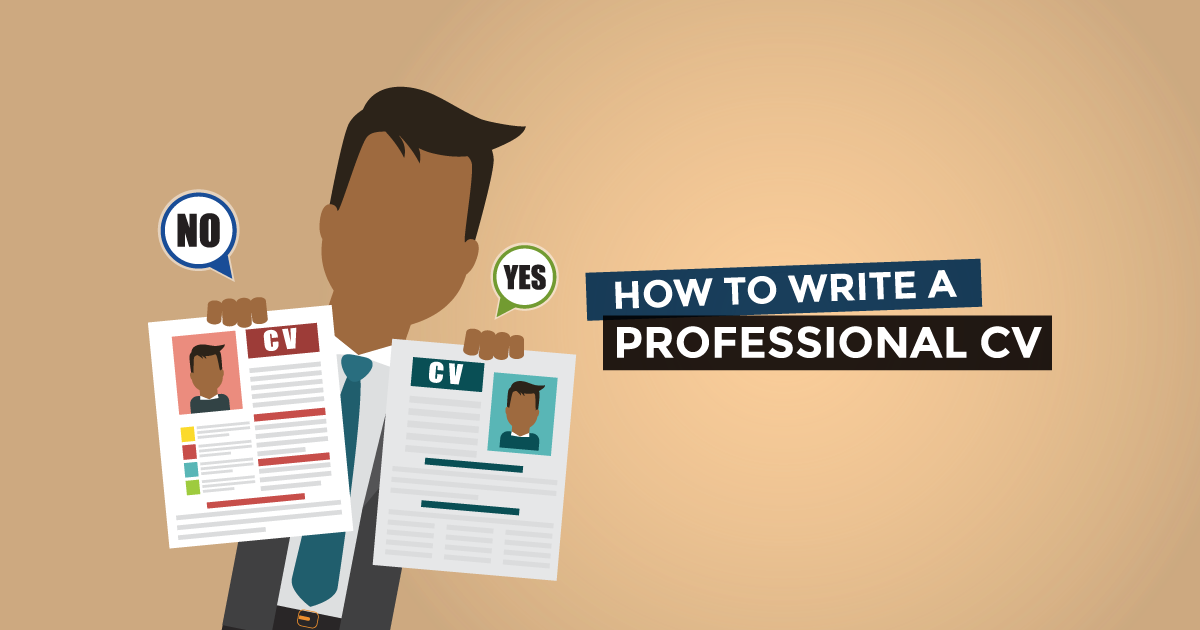Five Easy Rules for a CV

posted:3 years agobyAwatef Hamdiin CVs
Is writing a CV one of your biggest challenges? Many applicants have less interest in writing and think that a copy-pasted CV can save the problem. But, this is not the right way to get a job. Writing a CV should not be an avoidable task, especially when each job has its specific requirements. You cannot rely on a ready-made CV, whenever you are applying for a job. In Austria, a CV includes a precise description of your previous roles, skills, and hobbies. It also differs from CVs applied in other countries. So what can be the easiest rules for writing an Austrian CV?
CVs in Austria

To get the job of your dreams in Austria, you need to prepare an important document that will introduce your application. Whatever your qualifications, level of expertise, skills, you have to gather all these information in a CV. The Austrian CV is part of an application file, known as a “Bewerbungsmappe.” The latter includes several documents such as a cover letter, proof of your previous jobs (letters of recommendation, work certificates), copies of your diplomas as well as the certificates of previous training or internships, etc... Remember that the Austrian CV must be written in German.
CV Writing Tips:
If you are lost in translation or confused about the best application tips to reach your target job, sign up to Fratres. Fratres is a worldwide job search engine that includes a career guide helping job seekers to get employed fast. Since today’s mission is writing a CV meeting the Austrian standards, here are five simple rules to craft this document:
1. Perfectly Reading the Job Description:
Writing a CV starts by reading the requirements of the target job, so that you can structure your CV content. Keep in mind that recruiters have little time for reading. It is therefore important to know what to put in a CV to make reading easier for them. Writing a CV is a selective task. You have a bunch of professional information that can put you in more than a single profession. But, having the job description as the main CV source will help you provide what recruiters are looking for in a candidate.
2. Consider the CV General Structure
The table form of a CV is the most common form, as it allows the recruiter to read the CV in a diagonal way. Austrian CVs are very descriptive and exceed a single page. Their average length is two or three pages, provided that the mentioned content is relevant to the chosen position. Personal details and photos must appear at the top of the CV. Professional experience must be placed before training. Languages, computer skills, driving license and hobbies should be written in the final section.
3. Craft your CV Components:
An Austrian CV has a specific set of elements listed, as the following:
A photo: Place a photo at the top left/ right of your CV. It is through your photo that recruiters can make a first impression. Avoid vacation photos, family photos, or poorly scanned photos. A good professional photo should match the position you are applying for.
Personal information: your first and last name must of course appear on the CV. The date and place of birth, nationality and marital status should be mentioned.
Contact information: include your mobile phone E-mail address, any online profile such as LinkedIn account.
Home address: if you have an address in Austria, do not hesitate to mention it. This will strengthen your credibility in terms of knowledge of the Austrian market. It is good to specify your location to prove your ability to move for a position.
Career objective: write a small section mentioning your career goals or your personal traits at work to provide a small introduction such as;
I am a graphic designer with considerable creativity, passionate about high technology and I love working in a team.
Work experience (Berufserfahrung):

As an experienced applicant write your previous professions in a chronological order (most recent at top). For work experience, mention the position held, the employer, the place of work, the type of work and the duration of the position. Do not hesitate to carefully describe the details of your tasks, especially if they are relevant to the target position.
Education/ Training/ Certificates
This section is divided into three other parts
- Educational background (Schulung): Primary and secondary education should be described in an Austrian CV. You should identify your school level since high school or primary school (in case of not entering a University) can determine your hard skills.
- University background(Weiterbildung): name of the institution, sector, the recently obtained degree, main majors..
- Internships (Berufsausbildung): indicate your internships in your professional experience. Mention your internship, place, training duration, and write a few lines about this training, determining which position have you held, which tasks have you done etc..
Know which one to select; not all training courses are necessarily adapting to the target position. For example; it is not always worth mentioning an accounting internship for a hotel job.
Skills and languages: Mention your skills by precising them by putting the type of skill (technical, manual, computer, driving etc..) level ( average, advanced, beginner, etc..). In this section, you can write about having a driver's license. Concerning languages is specific about your language levels by using these three categories:
- Spoken (Sprachen): mention the languages you can speak. Example: French, English, German.
- Bilingual (zweisprachig) in case of mastering more than a language, mention the two languages that you can use in spoken or written context.
- Fluent (Fliessend): this description is suitable for fluent candidates, who can speak German in a professional or daily context.
Interests: Austrian recruiters particularly appreciate a personalized application. So do not ignore this category in your CV! Your interests and hobbies should not be time consuming. Select intellectual and physical activities, or traveling.
4. Manage Career Breaks/ Gaps

If you have holes in your CV, don't panic! Unemployment for a few months is very well understood by employers. If your career gap lasts a year or more, explain what you did with it and why this break is a plus in your professional career. Whatever the reason for career gaps, learn how to present them in a positive way in your CV. A long illness may have been the opportunity to learn more about your sector of activity. A trip elsewhere may have given you more openness and new professional resolutions for the future. Finally, if it is useless to lie to cover up a "hole", you can always mention only the years of your experiences on your CV without identifying months, in case of having a short career break.
5. Put Date and Signature:
An Austrian CV includes the date of submitting your application and a signature. It is a way to give the impression that you have updated your CV for a specific job. A signature and a date are a very Austrian characteristic that will give your CV a human dimension. So, you can either print your CV and write your signature at the bottom of the page. If you are sending your CV in an email, try to use a signature generator and make sure that your CV is in a readable file, so that it will not be inserted in a Spam mail.
These were the top five easy rules of writing an Austrian CV. Proofread and edit your CV, before submitting your application file. Remember that Austrian CVs are written in German, try to improve your German language, as translation systems do not offer an accurate translation.
